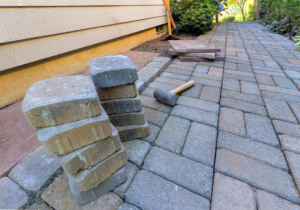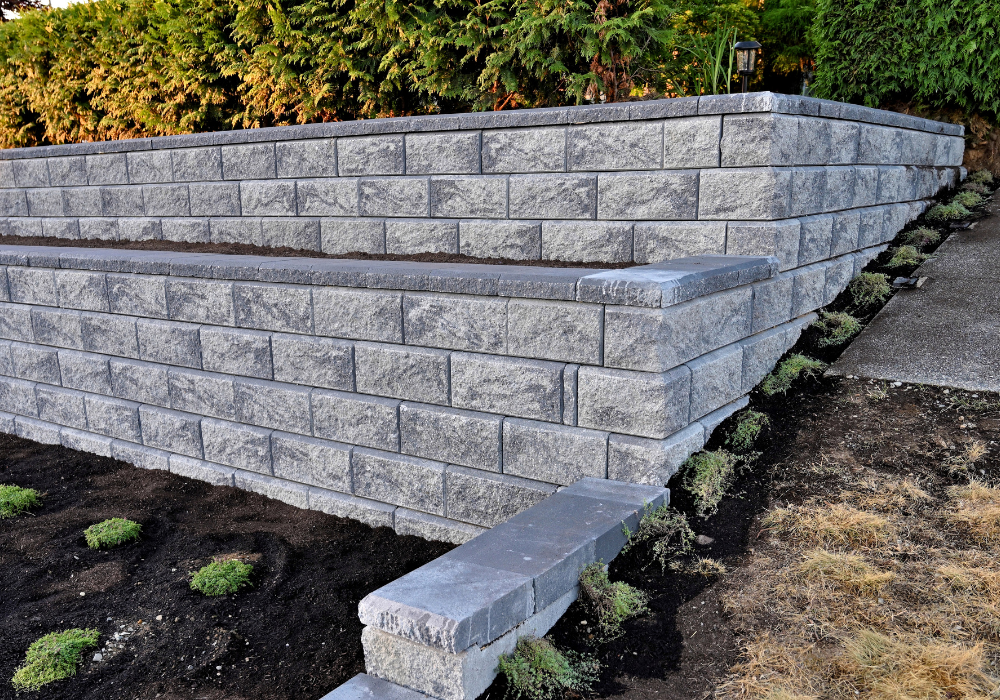Imagine stepping into your backyard and being greeted by a beautifully crafted stone pathway, leading to a cozy pergola where you can unwind after a long day. This is the magic of hardscaping. Hardscaping plays a crucial role in modern landscape design by incorporating non-living elements into outdoor spaces. For homeowners looking to enhance their property’s curb appeal, reduce maintenance, and create inviting outdoor living areas, hardscaping provides a multitude of benefits. In this blog post, we’ll explore the significance of hardscaping, its core elements, and how you can integrate it into your landscape design. From sustainable techniques to trending styles, we have everything you need to know to take your outdoor space to the next level.
 The Basics of Hardscaping
The Basics of Hardscaping
Hardscaping refers to the use of non-living materials such as stone, wood, and metal to create structures and features within a landscape. Key elements of hardscaping include pathways, walls, pergolas, patios, and water features. These features add structure and functionality to your outdoor space, making it both visually appealing and practical.
Pathways serve as guiding lines that connect different areas of your yard. They can be made from various materials, including gravel, brick, or natural stone. Walls, whether retaining or decorative, provide support and section off areas, adding depth and dimension to your garden. Pergolas offer shaded areas perfect for relaxation or entertaining guests. Each of these elements can be customized to fit your unique design preferences and needs.
Incorporating hardscaping into your landscape design offers endless possibilities. You can create a serene garden retreat, an outdoor dining area, or a playful space for children. The key is to blend these elements seamlessly with your existing landscape, enhancing its natural beauty while adding new dimensions.
Advantages of Incorporating Hardscaping
One of the primary advantages of hardscaping is its ability to enhance property value. Well-designed hardscape features can significantly boost curb appeal, making your home more attractive to potential buyers. Additionally, hardscaping elements such as patios and outdoor kitchens extend your living space beyond the confines of your home, providing areas for relaxation and entertainment.
Another notable benefit is the reduction in maintenance. Unlike grass and plants, hardscape materials do not require regular watering, mowing, or pruning. This saves you time and effort while also reducing water usage—a win-win for both you and the environment.
Furthermore, hardscaping can help manage water drainage and prevent soil erosion. Properly installed retaining walls, for example, can redirect water flow and stabilize slopes. By incorporating these elements into your landscape design, you not only enhance its aesthetic appeal but also improve its functionality and sustainability.
Designing with Hardscaping
Integrating hardscaping with your existing landscape requires careful planning and consideration. Start by assessing your outdoor space and identifying areas where hardscape features would be most beneficial. Consider how these elements will interact with your existing plants and greenery. The goal is to create a harmonious balance between hard and soft elements.
When designing your hardscape, think about the long-term growth of your garden. Plan for future changes and expansions by leaving room for additional features or plantings. This ensures that your landscape remains adaptable and can evolve with your needs and preferences.
It’s also important to choose materials that complement your home’s architectural style. For instance, a modern home might benefit from sleek concrete pavers, while a rustic cottage could be enhanced with natural stone pathways. By selecting materials that align with your overall design aesthetic, you create a cohesive and visually pleasing outdoor space.
 Sustainable Hardscaping Techniques
Sustainable Hardscaping Techniques
Sustainable hardscaping practices are becoming increasingly popular as homeowners seek eco-friendly solutions for their landscapes. One approach is to use permeable materials that allow water to seep through, reducing runoff and promoting natural groundwater recharge. Materials such as permeable pavers, gravel, and crushed stone are excellent choices for pathways and driveways.
Another sustainable option is to repurpose existing materials. Reclaimed wood, bricks, and stones can be used to create unique and environmentally friendly hardscape features. Not only does this reduce waste, but it also adds character and history to your outdoor space.
Consider incorporating native plants and xeriscaping principles into your hardscape design. Native plants are well-adapted to local conditions and require less water and maintenance. Xeriscaping focuses on reducing water usage through thoughtful plant selection and efficient irrigation methods. By combining these practices with hardscaping, you create a beautiful and sustainable landscape.
Hardscaping is a powerful tool in modern landscape design, offering numerous benefits for homeowners. From enhancing property value and reducing maintenance to creating beautiful and functional outdoor spaces, hardscaping has much to offer. By understanding the basics, exploring sustainable practices, and staying updated on current trends, you can create a landscape that is both visually stunning and environmentally responsible.


